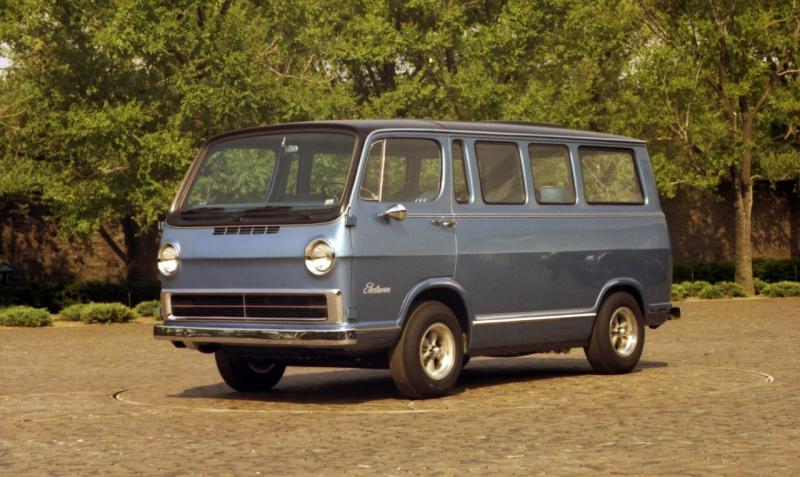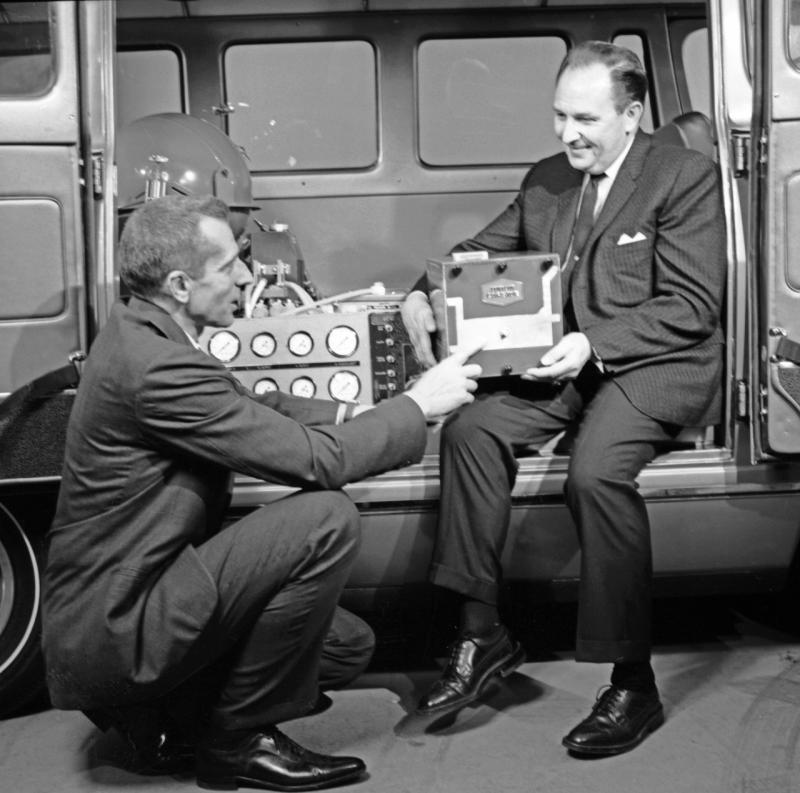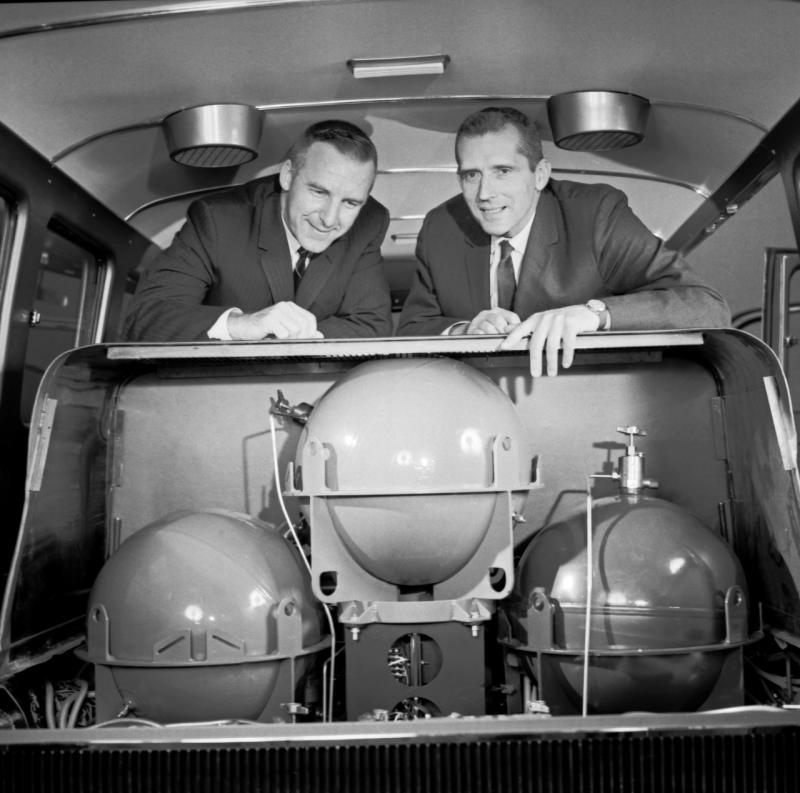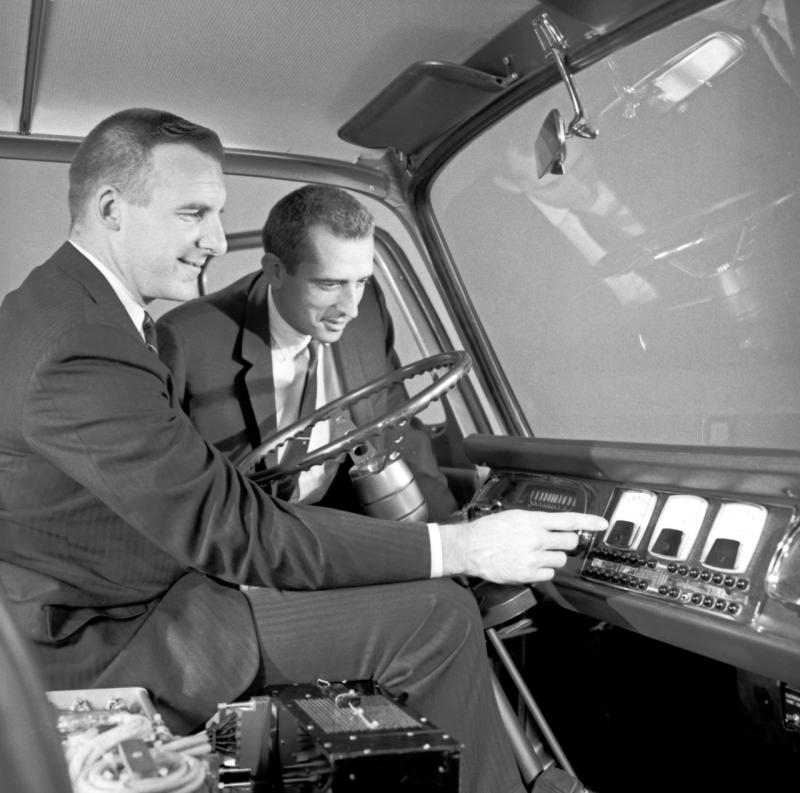
GM's 1966 Electrovan: The world's first hydrogen fuel cell vehicle, born from NASA tech, featuring impressive specs despite its experimental nature and space-age complexity.

Drivetech Partners
In 1966, General Motors created automotive history with the Electrovan, a modified GMC Handivan that became the world's first hydrogen fuel cell vehicle. This pioneering prototype emerged during the Space Race era, adapting NASA's Apollo mission technology to demonstrate how alternative propulsion systems could work in everyday vehicles—a vision GM developed decades before today's renewed interest in hydrogen power.
Key Takeaways
The Electrovan was built by 200+ specialist engineers working for nearly two years to adapt space technology for automotive use
The Electrovan didn't have any specialized software or microchips, as both automotive software and integrated circuits were in their infancy at the time. The Electrovan’s powertrain was based on analog control systems and relied on a hydrogen-oxygen fuel cell stack developed by Union Carbide, with the entire vehicle managed and operated through mechanical and electrical relays, wiring, and manual procedures
The vehicle achieved impressive specs: 70 mph top speed and 150-mile range despite its experimental nature
Its complex Hardware Defined Vehicle system included 32 fuel cell modules connected by 550 feet of piping and highly combustible hydrogen and oxygen tanks
GM faced significant hurdles including a startup procedure that initially took three weeks to complete and prohibitively expensive materials
The Electrovan's technology directly influenced modern hydrogen vehicles like the Toyota Mirai, though infrastructure remains challenging

Birth of a Hydrogen Pioneer
The Electrovan emerged from GM's engineering labs during a time of bold technological experimentation in America. Led by Floyd Wyczalek and Dr. Craig Marks, a team of 200-250 dedicated engineers spent between 10 months and 2 years transforming a standard GMC Handivan into something revolutionary. This wasn't just another concept car—it represented GM's commitment to exploring alternatives to combustion engines decades before such thinking became mainstream.
The timing wasn't coincidental. The Electrovan development ran parallel to NASA's space program, with GM adapting fuel cell technology similar to what powered the Gemini spacecraft. This technological crossover demonstrated how innovation from the space program could find practical applications on Earth's roadways, highlighting the unexpected benefits of America's space investments.
Technological Marvel: Inside the Electrovan's Complex Systems
What made the Electrovan special wasn't visible from the outside. Beneath its conventional van exterior lay a remarkably complex system that pushed 1960s technology to its limits. The heart of the vehicle consisted of 32 Union Carbide fuel cell modules rated for 1,000 hours of use—an impressive durability benchmark for the era.

These modules connected through an intricate network of 550 feet of plastic piping and miles of electrical wiring. The system required super-cooled liquid hydrogen and liquid oxygen as fuel, stored in specially designed tanks mounted behind the middle bench seat. Engineers positioned the motor and control system between and under the front seats, while extensive piping throughout the rear drastically reduced the van's seating capacity from six passengers to just two.
The fuel cell technology itself represented a major achievement. Each cell generated electricity through a chemical reaction between hydrogen and oxygen, producing only water as a byproduct—the same clean energy process that powers today's hydrogen vehicles, albeit in a much more refined form.
Impressive Performance Metrics for Its Era
Despite its experimental nature, the Electrovan achieved performance metrics that remain impressive considering the technological limitations of the 1960s. The power output reached 160 kilowatts (214 horsepower), allowing the van to hit top speeds between 63-70 mph. On a full tank, it could travel 100-150 miles before needing refueling—ranges comparable to some early electric vehicles decades later.
The acceleration wasn't exactly sporty by today's standards, with 0-60 mph taking about 30 seconds, but this reflected the vehicle's considerable weight more than power limitations. The Electrovan tipped the scales at 7,100 pounds (3,220 kg)—more than double the 3,250 pounds of its conventional gasoline counterpart. The power train alone accounted for around 3,900 pounds, highlighting the technological hurdles the engineers faced in miniaturizing the system.
Operational Challenges and Safety Concerns
The Electrovan's promise came with significant practical challenges that highlighted how far ahead of its time the concept truly was. Perhaps most telling was its startup procedure, which initially required three weeks to complete. Engineers eventually streamlined this to three hours—still impractical for everyday use but a remarkable improvement.
The operation was so complex that reportedly only one person at GM fully understood how to interpret the vehicle's 30 warning lights. This complexity, combined with the highly combustible nature of its fuel, meant the Electrovan never ventured onto public roads. Testing occurred exclusively on GM property, in special outdoor areas well away from buildings.
Safety concerns proved justified during testing. In September 1966, an external hydrogen tank explosion sent debris flying a quarter mile away. Fortunately, no one was injured, but the incident underscored the challenges of working with highly combustible fuels in automotive applications.

The Space Race Connection
The Electrovan didn't emerge in isolation but rather as part of a broader technological transfer from America's ambitious space program. GM engineers adapted NASA's fuel cell technology from the Gemini spacecraft, showcasing how automotive innovation often draws from seemingly unrelated fields.
In space, fuel cells served the dual purpose of generating electricity and producing drinkable water for astronauts—an elegant solution to multiple challenges of space travel. The Electrovan represented a terrestrial application of this same technology, following NASA's approach to energy generation in a completely different context.
This connection between automotive and aerospace innovation wasn't unique to the Electrovan. Throughout the 1960s and beyond, technologies developed for space exploration found their way into everyday vehicles, from improved cooling systems to crash safety advancements.
Prohibitive Costs and Practical Limitations
Despite its technological achievements, the Electrovan faced insurmountable commercial barriers in the 1960s. The economics simply didn't work—the platinum in the fuel cell alone would have cost as much as an entire fleet of conventional vans. This metal, essential for catalyzing the chemical reaction in the fuel cells, represented just one of many prohibitively expensive components.
Infrastructure presented another major hurdle. No hydrogen refueling stations existed, limiting practical usability to essentially zero outside of GM's testing facilities. This chicken-and-egg problem—no vehicles to justify infrastructure, and no infrastructure to support vehicles—continues to challenge hydrogen adoption today.
GM always viewed the Electrovan as an engineering exercise rather than a production prototype. After testing concluded, engineers stored the vehicle in a warehouse for 31 years before the company recognized its historical significance as the world's first hydrogen fuel cell vehicle.

From Electrovan to Modern Hydrogen Vehicles
The technological gulf between the Electrovan and today's hydrogen fuel cell vehicles is vast, yet the fundamental concept remains remarkably similar. Modern vehicles like the Toyota Mirai, Honda FCX Clarity, and BMW hydrogen concepts all trace their conceptual lineage back to GM's pioneering experiment.
Today's fuel cells have evolved significantly, using pressurized hydrogen with oxygen from ambient air instead of requiring separate liquid oxygen tanks. Modern systems produce only water as a byproduct with zero harmful emissions, making them among the cleanest propulsion technologies available.
Yet despite six decades of progress, hydrogen vehicles still face infrastructure limitations similar to those that stymied the Electrovan. The global hydrogen refueling network remains sparse, though countries like Japan, Germany, and parts of California have made significant investments in recent years.
Legacy and Future Implications
The Electrovan represents more than just an interesting footnote in automotive history—it demonstrates how technological visions can take decades to mature. In the 1960s, GM simultaneously developed the Electrovan alongside the Electrovair II, a battery-powered Corvair with a 115-horsepower motor and 40-80 mile range. These parallel developments show how GM explored multiple paths toward a future beyond gasoline.
Today, as the automotive industry grapples with the transition to zero-emission vehicles, hydrogen fuel cells offer potential advantages over batteries in certain applications, particularly for larger vehicles requiring long range or quick refueling. The technology continues to evolve beyond transportation, with applications in industrial power generation and household energy systems.
The Electrovan's legacy lives on in every hydrogen fuel cell vehicle on the road today. While it may have been decades ahead of its time, GM's pioneering work laid crucial groundwork for technologies that may yet play a significant role in our sustainable transport future.
Sources
Hydrogen Cars Now - GM Electrovan
GM News - Retro Rides: 1966 GM Electrovan fuel cell vehicle
Electric Cars Report - Fueling the Future: From the Moon to the Motorway, the Story of GM's 1966 Electrovan
Industry Week - A Short History of the First Hydrogen Fuel Cell Vehicle
Interplex - The First Hydrogen Fuel Cell Vehicle Was Created in 1966
Images are courtesy of the GM Heritage Center





